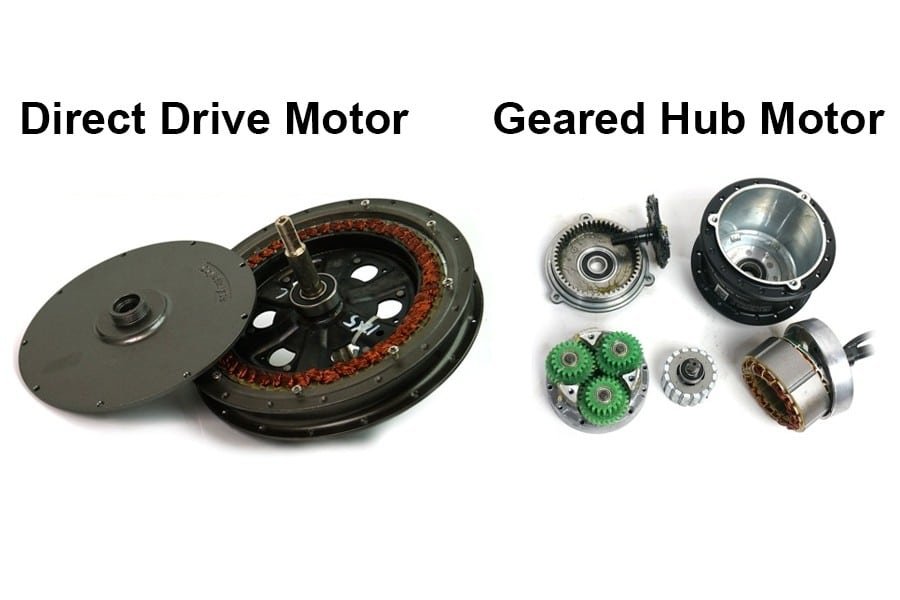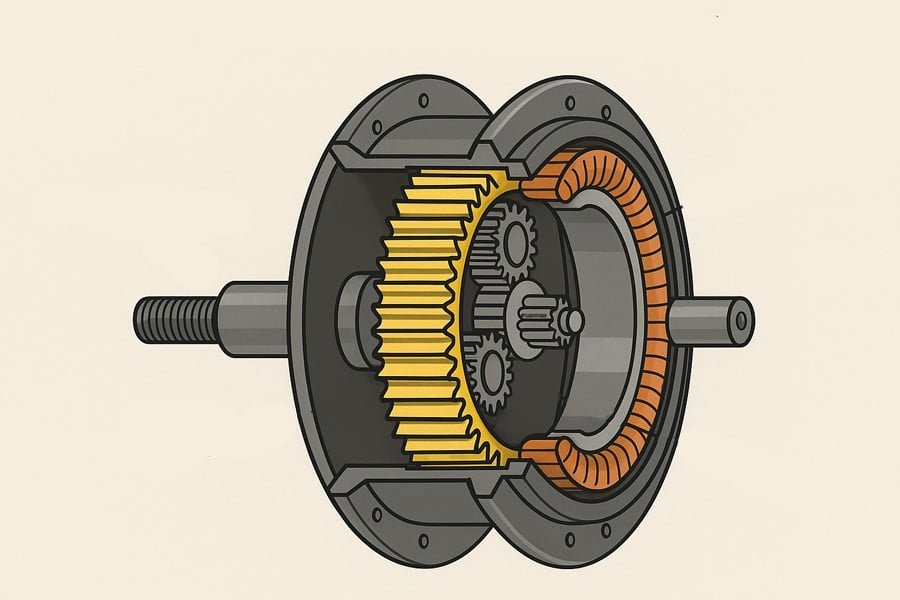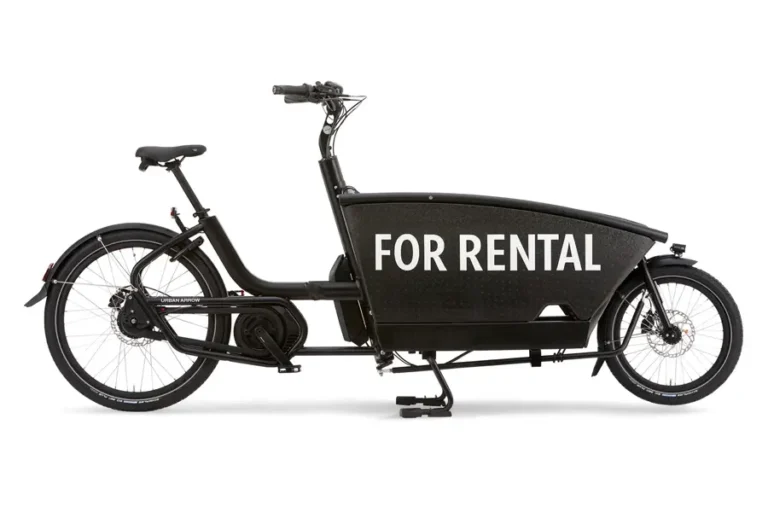Στο Regen, γνωρίζουμε ότι η επιλογή του σωστού κινητήρα δεν είναι απλώς μια τεχνική απόφαση — είναι στρατηγική. Για τις μάρκες, τους λιανοπωλητές και τους μηχανικούς στον κλάδο των ηλεκτρικών ποδηλάτων, ειδικά στον Ευρωπαϊκή αγορά ποδηλάτων φορτίου, η κατανόηση των τύπων κινητήρων είναι το κλειδί για την παροχή απόδοσης, αξιοπιστίας και ικανοποίησης πελατών.
Έχουμε υποστηρίξει αμέτρητους πελάτες στη βελτιστοποίηση των συστήματα τροφοδοσίας ποδηλάτων ηλεκτρικού φορτίου, βοηθώντας τους να κατανοήσουν τα πλεονεκτήματα και τα μειονεκτήματα άμεση κίνηση και κινητήρες με οδοντωτούς τροχούςΑυτός ο οδηγός μοιράζεται τις γνώσεις μας — βασισμένες σε πραγματικά έργα, όχι μόνο σε θεωρία.
1. Εισαγωγή: Γιατί έχει σημασία η επιλογή κινητήρα
Στον αναπτυσσόμενο κόσμο των ηλεκτρικών ποδηλάτων, η επιλογή του κινητήρα μπορεί να καθορίσει την επιτυχία του προϊόντος σας. ποδήλατα φορτίου, όπου το φορτίο, το έδαφος και η απόδοση έχουν μεγαλύτερη σημασία από ποτέ, ο λάθος κινητήρας μπορεί να οδηγήσει σε κακή ικανότητα αναρρίχησης, περιορισμένη εμβέλεια ή περιττό βάρος.
Στην Regen, ειδικευόμαστε στην προσαρμογή λύσεων κινητήρων για ευρωπαϊκές μάρκες. Έχουμε δει από πρώτο χέρι πώς κατανοείται η διαφορά μεταξύ κινητήρες με οδοντωτούς τροχούς και κινητήρες άμεσης κίνησης οδηγεί σε καλύτερα σχέδια, πιο ευχαριστημένους πελάτες και ισχυρότερη τοποθέτηση στην αγορά.
Αυτό το άρθρο αφορά κυρίως κινητήρες με γρανάζια και κινητήρες άμεσης μετάδοσης κίνησης. Αν ενδιαφέρεστε, μπορείτε να διαβάσετε το προηγούμενο άρθρο:
Τεχνική Επισκόπηση
Πώς λειτουργούν οι κινητήρες με γρανάζια
ΕΝΑ κινητήρας με οδοντωτό τροχό ενσωματώνει ένα σετ πλανητικών γραναζιών μέσα στο περίβλημα του κέντρου. Ο ίδιος ο κινητήρας λειτουργεί σε υψηλές στροφές ανά λεπτό (RPM), αλλά μέσω του συστήματος μείωσης ταχυτήτων, αυτή η ταχύτητα μετατρέπεται σε χαμηλότερη, πιο αξιοποιήσιμη ταχύτητα τροχού, ενώ παράλληλα αυξάνεται σημαντικά η ροπή εξόδου. Αυτός ο σχεδιασμός επιτρέπει σε μικρότερους, ελαφρύτερους κινητήρες να παρέχουν επαρκή ισχύ, ειδικά για εφαρμογές που απαιτούν συχνές εκκινήσεις, στάσεις και δυνατότητες ανόδου.
Αυτοί οι κινητήρες συνήθως ζυγίζουν μεταξύ 2 έως 4 κιλά, καθιστώντας τα συμπαγή και εύκολα στην ενσωμάτωση σε διάφορα σχέδια ποδηλάτων χωρίς να επηρεάζεται σημαντικά το συνολικό βάρος. Η συμπερίληψη ενός μηχανισμού ελεύθερης περιστροφής σημαίνει επίσης ότι όταν ο κινητήρας δεν χρησιμοποιείται, οι αναβάτες μπορούν να κάνουν πεταλάρισμα χωρίς αντίσταση.
Πώς λειτουργούν οι κινητήρες πλήμνης άμεσης κίνησης
Αντίθετα, ένα κινητήρας πλήμνης άμεσης κίνησης εξαλείφει εντελώς τα εσωτερικά γρανάζια. Ο στάτορας του κινητήρα είναι στερεωμένος στον άξονα, ενώ το εξωτερικό κέλυφος, ενσωματωμένο με μόνιμους μαγνήτες, περιστρέφεται απευθείας με τον τροχό. Η ισχύς παρέχεται μέσω ηλεκτρομαγνητικής δύναμης, παρέχοντας ομαλή και αθόρυβη λειτουργία.
Ωστόσο, αυτή η απλότητα έχει το κόστος του μεγέθους και του βάρους. Οι κινητήρες άμεσης κίνησης ζυγίζουν γενικά μεταξύ 4 έως 9 κιλά, με διαμέτρους που συχνά υπερβαίνουν 20 εκ.Δεδομένου ότι αυτοί οι κινητήρες πρέπει να περιστρέφονται με την ίδια ταχύτητα με τον τροχό, είναι εγγενώς λιγότερο αποδοτικοί σε χαμηλές ταχύτητες, αλλά υπερέχουν στη διατήρηση της υψηλής ταχύτητας πλεύσης.

Πλεονεκτήματα & Μειονεκτήματα: Σύγκριση Μεταξύ κινητήρων με γρανάζια και κέντρου άμεσης κίνησης
Στην Regen, αξιολογούμε τους τύπους κινητήρων όχι μόνο με βάση τα γενικά πλεονεκτήματα, αλλά και με βάση την απόδοσή τους σε σχέση με κρίσιμες τεχνικές παραμέτρους, όπως η ροπή εξόδου, η ενεργειακή απόδοση, η ανθεκτικότητα και η ενσωμάτωση του συστήματος.
Κινητήρες με γρανάζια
Φόντα:
- Υψηλή ροπή εξόδου: Ιδανικό για αναρρίχηση σε λόφους, μεταφορά βαρέων φορτίων και συχνές συνθήκες σταματήματος-ξεκινήματος που είναι τυπικές στην αστική εφοδιαστική αλυσίδα.
- Ελαφρύ και συμπαγές: Υποστηρίζει καλύτερο χειρισμό και συμμορφώνεται εύκολα με τους κανονισμούς που αφορούν την ευαισθησία στο βάρος, όπως π.χ. ΕΝ 15194.
- Λειτουργικότητα ελεύθερης περιστροφής: Επιτρέπει την ομαλή πεταλάρισμα χωρίς αντίσταση του κινητήρα όταν δεν τροφοδοτείται.
- Ενεργειακή Απόδοση σε Χαμηλές έως Μεσαίες Ταχύτητες: Βελτιστοποιημένο για διαδρομές οδήγησης στην πόλη και παραδόσεων.
- Οικονομικά Αποδοτική Παραγωγή: Το χαμηλότερο κόστος παραγωγής μεταφράζεται σε ανταγωνιστικές τιμές για τους κατασκευαστές πρωτότυπου εξοπλισμού (OEM) και τους κατασκευαστές ODM.
Μειονεκτήματα:
- Μηχανική φθορά: Τα εσωτερικά γρανάζια υπόκεινται σε φθορά με την πάροδο του χρόνου, συνήθως μετά από 10.000 έως 15.000 χλμ., ανάλογα με το φορτίο και το έδαφος.
- Θόρυβος λειτουργίας: Αν και τα σύγχρονα υλικά και τα σχέδια ελικοειδών γραναζιών έχουν μειωμένα επίπεδα θορύβου, αυτά παραμένουν υψηλότερα από τα συστήματα χωρίς γρανάζια.
- Όχι 1TP2Ενεργητικό φρενάρισμα: Ο μηχανισμός ελεύθερης περιστροφής αποτρέπει την ανάκτηση ενέργειας κατά το φρενάρισμα.
Κινητήρες πλήμνης άμεσης κίνησης
Φόντα:
- Αθόρυβη λειτουργία: Η απουσία μηχανικών σημείων επαφής έχει ως αποτέλεσμα σχεδόν αθόρυβη απόδοση, βελτιώνοντας την άνεση του αναβάτη.
- 1TP2Δυνατότητα εναλλασσόμενου φρεναρίσματος: Μετατρέπει την κινητική ενέργεια πίσω σε ισχύ μπαταρίας, χρήσιμη σε μεγάλες καταβάσεις και μειώνοντας τη φθορά των φρένων.
- Αντοχή: Λιγότερα κινούμενα μέρη οδηγούν σε χαμηλότερα ποσοστά μηχανικών βλαβών με την πάροδο του χρόνου.
- Σταθερή απόδοση υψηλής ταχύτητας: Αποδίδει καλύτερα σε σταθερά υψηλότερες ταχύτητες, καθιστώντας το κατάλληλο για ποδήλατα υψηλής ταχύτητας και υπεραστικές μεταφορές.
Μειονεκτήματα:
- Βαρύ και ογκώδες: Προσθέτει σημαντικό βάρος, το οποίο μπορεί να επηρεάσει αρνητικά τον χειρισμό, ειδικά για ποδήλατα φορτίου.
- Χαμηλή ροπή κατά την εκκίνηση: Κακή απόδοση σε απότομες ανηφόρες ή σε περιβάλλοντα με σταματημό-ξεκίνα χωρίς υπερμεγέθη σχέδια.
- Μαγνητική αντίσταση: Η απουσία ελεύθερου τροχού δυσχεραίνει την πεταλιέρα χωρίς βοήθεια.
- Χαμηλότερη απόδοση σε αστικές συνθήκες: Υψηλότερη κατανάλωση ενέργειας κατά τη λειτουργία σε χαμηλή ταχύτητα και συχνή επιτάχυνση.
Πληροφορίες εφαρμογής από το Regen
Με εκτεταμένη εμπειρία σε έργα σε ποικίλες αγορές, η Regen έχει αναπτύξει μια δομημένη προσέγγιση στην επιλογή κινητήρων, ιδιαίτερα για ποδήλατα ηλεκτρικού φορτίου, όπου οι λειτουργικές απαιτήσεις ποικίλλουν σημαντικά ανάλογα με τη γεωγραφία, το ωφέλιμο φορτίο και τα πρότυπα χρήσης.
Επιλογή κινητήρα με βάση την περίπτωση χρήσης
- Ποδήλατα αστικού φορτίου: Για ποδήλατα διανομής στην πόλη που αντιμετωπίζουν συχνές στάσεις, κίνηση και ανηφόρες, συνιστούμε ανεπιφύλακτα κινητήρες με οδοντωτούς τροχούςΗ υψηλή ροπή τους και ο ελαφρύς σχεδιασμός τους τα καθιστούν ιδανικά για πλοήγηση σε πυκνά αστικά περιβάλλοντα, μεγιστοποιώντας παράλληλα την απόδοση της μπαταρίας.
- Μεταφορά Φορτίων σε Μεγάλες Αποστάσεις: Όπου οι διαδρομές περιλαμβάνουν επίπεδο έδαφος και εκτεταμένες ταχύτητες πλεύσης, κινητήρες άμεσης κίνησης να γίνει μια βιώσιμη επιλογή. Σε τέτοιες περιπτώσεις, η αναγεννητική πέδηση μπορεί να προσφέρει σταδιακά κέρδη απόδοσης, ειδικά σε διαδρομές με μεγάλα κατηφορικά τμήματα.
- Εφαρμογές σε μικτό έδαφος: Σε περιοχές με μεταβλητό έδαφος, η προσέγγισή μας συχνά περιλαμβάνει προηγμένη προσομοίωση ροπής και ανάλυση φορτίου για να προσδιορίσουμε εάν τα βελτιωμένα συστήματα γραναζιών ή οι υβριδικές λύσεις προσφέρουν καλύτερη απόδοση.
Αναφορές
- Ποδήλατα Espin. (2022). Κινητήρες με γρανάζια έναντι κινητήρων με άμεση μετάδοση κίνησης: Ποιος είναι καλύτερος; Ανακτήθηκε από https://www.espinbikes.com
- Ebikes.ca. (2024). Κατανόηση του 1TP2 Ενεργού Φρεναρίσματος σε Ηλεκτρικά ΠοδήλαταΑνακτήθηκε από https://www.ebikes.ca
- MacArthur, J., Harpool, M., & Scheppke, D. (2021). Το Δυναμικό του Ηλεκτρικού Ποδηλάτου: Εξελίξεις στην Τεχνολογία του Ηλεκτρικού ΠοδηλάτουΚέντρο Έρευνας και Εκπαίδευσης Μεταφορών (TREC). https://doi.org/10.15760/trec.274
- Bafang. (2023). Λευκή Βίβλος Τεχνολογίας ΚινητήρωνΑνακτήθηκε από https://www.bafang-e.com
- Μάλε. (2024). Σύστημα X20: Η επόμενη γενιά ελαφρών κινητήρων ηλεκτρικών ποδηλάτωνΑνακτήθηκε από https://mahle-smartbike.com
- Νεοδίσκοι. (2023). Αποδοτικές λύσεις άμεσης οδήγησης για ηλεκτρικά ποδήλαταΑνακτήθηκε από https://www.neodrives.com
- Ευρωπαϊκή Επιτροπή Τυποποίησης. (2023). EN 15194: Ηλεκτρικά υποβοηθούμενα ποδήλατα – EPAC Bicycles.
Αποποίηση ευθύνης πνευματικών δικαιωμάτων εικόνας
Ορισμένες εικόνες που χρησιμοποιούνται σε αυτόν τον ιστότοπο/άρθρο προέρχονται από το διαδίκτυο και προορίζονται αποκλειστικά για επεξηγηματικούς και εκπαιδευτικούς σκοπούς, με σκοπό την καλύτερη κατανόηση του περιεχομένου. Σεβόμαστε τα δικαιώματα πνευματικής ιδιοκτησίας των αρχικών δημιουργών και προσπαθούμε να αναφέρουμε τις πηγές όπου είναι εφικτό.
Εάν είστε ο νόμιμος κάτοχος οποιασδήποτε εικόνας που εμφανίζεται εδώ και πιστεύετε ότι η χρήση της συνιστά παραβίαση πνευματικών δικαιωμάτων, επικοινωνήστε μαζί μας στη διεύθυνση info@regencargobikes.comΜετά την επαλήθευση, θα αφαιρέσουμε αμέσως την εικόνα ή θα παρέχουμε την κατάλληλη αναφορά.
Σας ευχαριστούμε για την κατανόησή σας.
© Regen Technology Co., Ltd.







